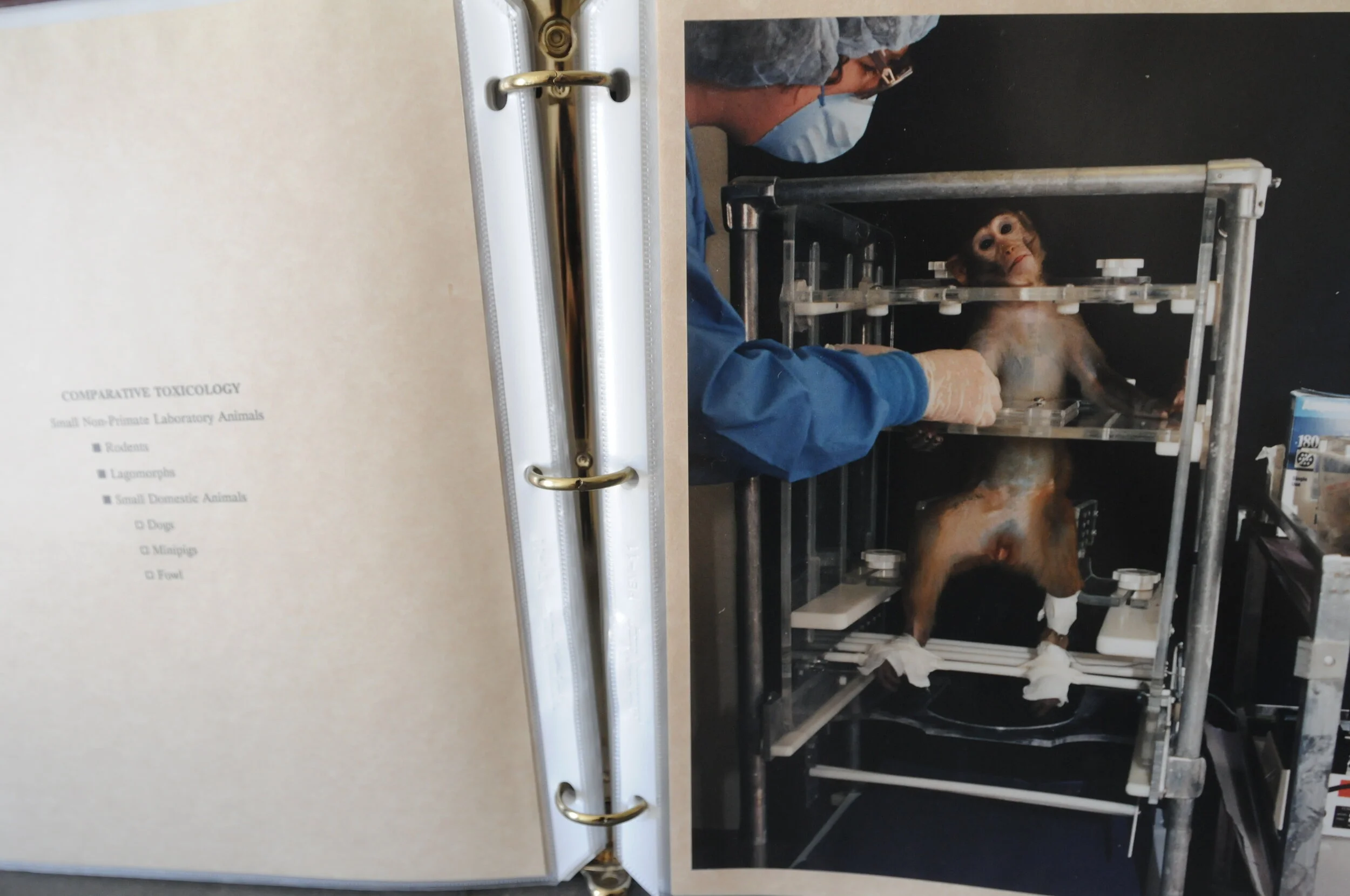Oh the pain of it all...
By Robin Huffman, Safina Center Fellow
My birthday was earlier this month. I’m at my favorite primate sanctuary, Ape Action Africa in Cameroon. Given the day off, I treated myself to my favorite activity—caring for young monkey orphans—as I do every other day while I’m here.
Some of them I’ve been tending to for more than 7 months. And even though I observe them for hours every single day, they continue to astonish me with their distinct personalities, profound intelligence, emotional range and sophisticated social dynamics. I see jealousy, envy, joy, nurturing, solidarity, comfort- and attention-seeking, compassion, and revenge, all acted out like a Shakespearean play. I’m in awe of their commanding physicality, complete with unique signature moves. And they leave no question as to their likes and dislikes.
The more my admiration, passion and intimate knowledge grow for these sentient beings, the greater my horror and pain when I think of primates in research.
Photo: Jo-Anne McArthur / We Animals
When human babies are born, their brains are less than 30% developed. A monkey brain at birth, on the other hand, is between 68% - 75%. That means that even infant monkeys have an immense capacity to suffer. And suffer they do, at the hands of humans in research. One of the most infamous and cruel was Harry Harlow in the ‘50s, ‘60s and ‘70s at University of Wisconsin, Madison, focusing on depression, isolation and maternal deprivation. One of his inventions was the “pit of despair.” Ripping infant monkeys from their mothers (after giving them several days to bond and feel nurtured), he dropped them into a steep V-shaped metal bin with a caged top, from which they had no chance of escape. After a couple of desperate days, they gave up. I get nightmares thinking about it.
Photo: Jo-Anne McArthur / We Animals
Yet even now, in 2018, well-funded experiments continue at universities and independent research labs in the U.S. involving extreme suffering of infant monkeys and monkeys in general.
The U.S. Department of Agriculture statistics for 2015 show 105,584 nonhuman primates held in U.S. labs. Of the 62,000 used in experiments, almost 29,000 were subjected to procedures involving pain and distress, and more than a thousand of those was without alleviation.
Photo: Jo-Anne McArthur / We Animals
Primates are hooked up to machines, forced to inhale only cigarette smoke or vehicle exhaust fumes, holes drilled into their heads and fixtures attached, toxic concoctions injected, inserted into orifices, slathered on their bodies.
And it’s occurring in many parts of the world. In China, they’re even accelerating their programs, unhampered by the ethics pressures some other countries face. Hundreds of thousands of monkeys are destined for this hellish existence (can it be called existence?). In Japan, marmoset monkeys have now been genetically engineered to be born with Alzheimer’s and Parkinson’s diseases, already showing symptoms by age 3.
I know someone who was a practicing neuroscientist. He left the profession. He could no longer be the agent of pain and suffering, breaking the spirit and causing the death of sentient monkeys who had the misfortune to end up in a research lab.
Of course it is up to each individual to decide whether primates serve humans or have their own right to life, these close cousins of ours. But it means characterizing them differently.
Photo: Jo-Anne McArthur / We Animals
Here’s the thing. They are NOT things. They are living, breathing individuals, with exquisite intelligence, emotion and social capacity. When I imagine it through THEIR eyes, via the monkeys I know so well—the suffering, the hopelessness and the abject helplessness at altering what they are subjected to is almost too much to bear. But it also means I cannot look away, that I must bear witness, and must therefore be one who speaks for them.




